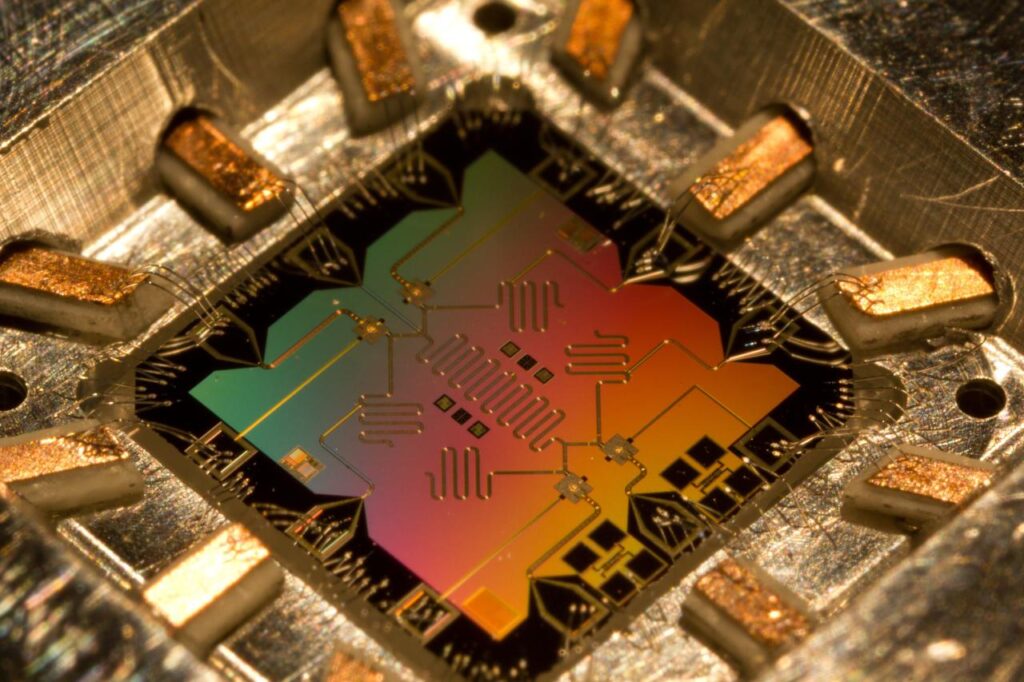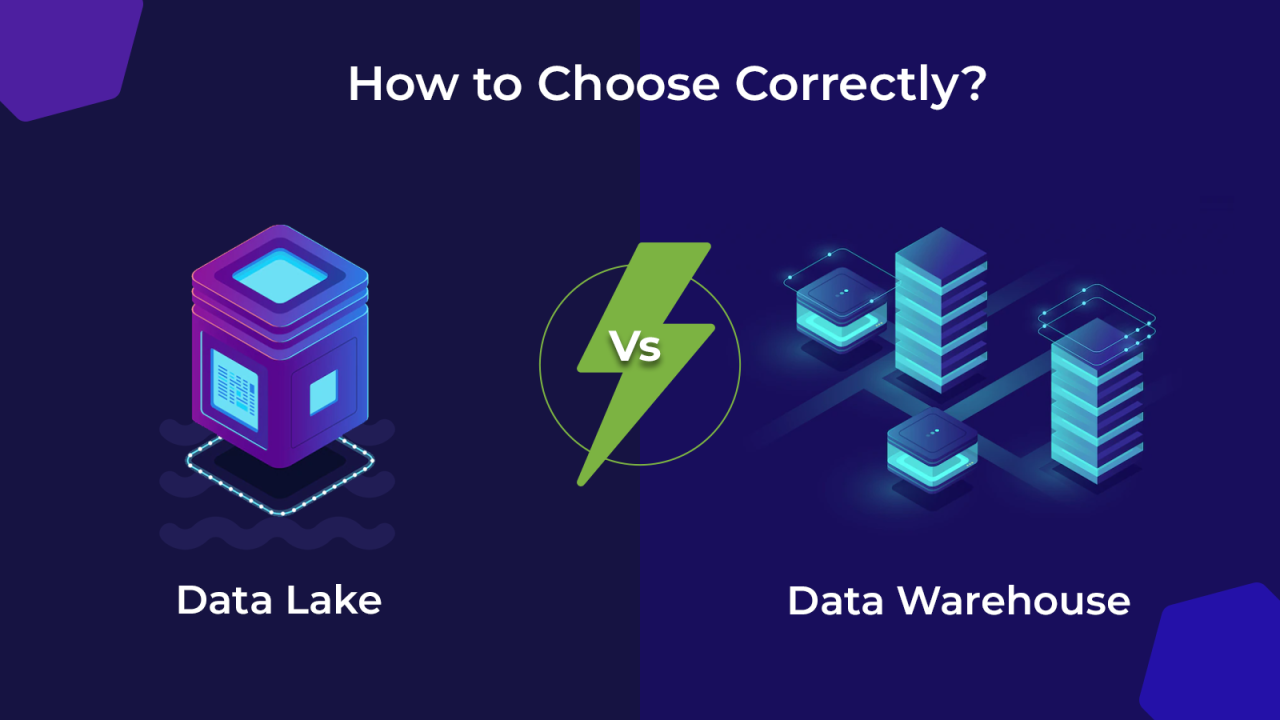The relentless pursuit of computational power has, for decades, driven humanity’s most significant technological breakthroughs. From the abacus to the silicon chip, each evolution has expanded the horizons of what’s possible. Today, we stand on the precipice of another monumental shift: the advent of quantum computing. Far from a mere upgrade to existing processors, quantum computing harnesses the mind-bending principles of quantum mechanics to tackle problems utterly intractable for even the most powerful supercomputers. While still in its nascent stages, the emergence of Quantum Services – cloud-based platforms offering access to quantum hardware and software – marks a critical inflection point. These services are democratizing access to this revolutionary technology, accelerating research, fostering innovation, and truly positioning quantum computing as the next colossal leap in the evolution of computation.
The Limits of Classical: Why Quantum is Necessary
To truly grasp the transformative potential of quantum computing, it’s essential to understand the fundamental limitations that even the most powerful classical (silicon-based) computers face when confronted with certain types of problems.
A. The End of Moore’s Law and Physical Barriers
For over half a century, computing power has grown exponentially, largely due to Moore’s Law, which predicted the doubling of transistors on a microchip every couple of years.
- Atomic Scale Constraints: Transistors on silicon chips are now approaching atomic dimensions. At this scale, the laws of classical physics begin to break down, and quantum effects (like electron tunneling) interfere with reliable operation. We’re hitting the fundamental physical limits of miniaturization.
- Heat Dissipation Challenges: Packing more transistors into smaller spaces generates immense heat. Cooling these ultra-dense chips becomes incredibly difficult and energy-intensive, creating a major engineering and environmental challenge.
- Power Consumption: The energy required to power and cool vast data centers filled with classical computers is becoming unsustainable. New computational paradigms are needed for greater energy efficiency.
- Von Neumann Bottleneck: Traditional computer architectures separate the processing unit (CPU) from memory. Data constantly shuttles back and forth, creating a bottleneck that limits performance for data-intensive tasks, regardless of processor speed.
B. Intractable Classical Problems: The Complexity Barrier
Beyond physical limits, classical computers are inherently incapable of efficiently solving certain classes of problems, no matter how much processing power is thrown at them. These are often referred to as ‘intractable’ or ‘exponentially complex’ problems.
- Combinatorial Explosion: Many real-world problems involve searching through an impossibly vast number of possibilities. For instance, optimizing a complex logistics network with thousands of variables, or factoring very large numbers, leads to a combinatorial explosion where the number of possible solutions grows exponentially, overwhelming classical computers.
- Simulating Quantum Systems: Ironically, one of the biggest challenges for classical computers is accurately simulating quantum mechanical phenomena. Understanding molecular interactions for drug discovery or material science requires modeling systems at a quantum level, which is computationally prohibitive for classical machines.
- Cryptography Breaking: While classical computers are excellent at encryption, certain algorithms (like Shor’s algorithm) running on a quantum computer could factor large numbers much faster, potentially breaking widely used public-key encryption standards (e.g., RSA).
- Unstructured Search: Searching through unsorted databases is a ‘needle in a haystack’ problem for classical computers, taking a very long time. Quantum algorithms (like Grover’s algorithm) offer a quadratic speedup for such tasks.
These limitations highlight that classical computing, while incredibly powerful for a vast range of tasks, hits fundamental walls for specific, high-impact problems. This is where quantum computing steps in.
The Quantum Leap: Fundamental Concepts of Quantum Computing
Quantum computing operates on entirely different principles than classical computing, leveraging phenomena from the subatomic world to achieve its power.
A. Qubits: The Quantum Bit
The fundamental unit of quantum information is the qubit (quantum bit), which differs profoundly from a classical bit.
- Superposition: Unlike a classical bit that must be either 0 or 1, a qubit can exist in a superposition of both states simultaneously (a combination of 0 and 1) until measured. This allows a single qubit to store exponentially more information than a classical bit. For example, two qubits in superposition can represent four states at once, three can represent eight, and so on.
- Physical Realizations: Qubits can be realized in various physical systems, including:
- Superconducting Qubits: Tiny circuits cooled to near absolute zero (as used by IBM, Google).
- Trapped Ions: Charged atoms suspended in electromagnetic fields (as used by IonQ, Honeywell).
- Topological Qubits: (still highly experimental) based on exotic quasiparticles that are theoretically more stable.
- Photonic Qubits: Using photons (particles of light) as qubits.
B. Entanglement: Spooky Action at a Distance
Quantum entanglement is a bizarre but powerful phenomenon where two or more qubits become linked, such that the state of one instantly influences the state of the others, regardless of the physical distance between them.
- Interconnectedness: Entanglement allows qubits to perform computations collectively and simultaneously. If one entangled qubit is measured, the state of its entangled partners is instantaneously determined.
- Exponential Problem Space: Superposition combined with entanglement allows a quantum computer with ‘n’ qubits to explore ‘2^n’ possibilities simultaneously. This is the source of its exponential speedup for certain problems.
- Non-Local Correlations: Einstein famously called entanglement “spooky action at a distance.” It enables complex, multi-variable calculations that are impossible for classical computers.
C. Interference: Amplifying Correct Answers
Quantum computers use interference (a wave-like property) to selectively amplify the probability of getting correct answers while diminishing the probability of incorrect ones.
- Constructive Interference: Paths that lead to the correct answer reinforce each other.
- Destructive Interference: Paths that lead to incorrect answers cancel each other out.
- Probabilistic Nature: Quantum computers don’t always give a definitive answer; instead, they provide a probability distribution of possible answers. Running the computation multiple times increases the confidence in the correct result.
D. Quantum Gates and Algorithms
Just like classical computers use logic gates (AND, OR, NOT), quantum computers use quantum gates (e.g., Hadamard, CNOT) to manipulate qubits and perform computations.
- Unitary Operations: Quantum gates are represented by unitary matrices, which are reversible and preserve the superposition and entanglement of qubits.
- Quantum Algorithms: Specific sequences of quantum gates designed to solve particular problems more efficiently than classical algorithms. Famous examples include:
- Shor’s Algorithm: For integer factorization (potentially breaking RSA encryption).
- Grover’s Algorithm: For unstructured database search (quadratic speedup).
- QAOA (Quantum Approximate Optimization Algorithm): For optimization problems.
- VQE (Variational Quantum Eigensolver): For chemistry and materials science simulations.
These fundamental concepts combine to enable quantum computers to tackle problems that are beyond the reach of any foreseeable classical machine, opening up entirely new computational possibilities.
The Rise of Quantum Services: Democratizing Access
While building and maintaining a quantum computer is incredibly complex and expensive, the advent of Quantum Services is democratizing access to this cutting-edge technology, making it available to researchers, developers, and businesses worldwide via the cloud.
A. Cloud-Based Access to Quantum Hardware
Major tech companies and quantum computing startups are now offering quantum hardware as a service.
- Remote Execution: Users can write quantum programs using specialized SDKs (Software Development Kits) or programming languages and then submit them to be executed on actual quantum processors hosted in the cloud. This eliminates the need for organizations to acquire and maintain their own multi-million dollar quantum computers.
- Varied Architectures: Quantum Services often provide access to different types of quantum hardware (e.g., superconducting qubits from IBM, trapped ion qubits from IonQ) and varying numbers of qubits, allowing researchers to experiment with different approaches.
- Real Quantum Machines and Simulators: Users can choose to run their quantum programs on actual quantum hardware (which might be prone to noise and errors in the current NISQ era – Noisy Intermediate-Scale Quantum) or on powerful quantum simulators running on classical supercomputers, useful for testing and debugging smaller quantum circuits.
B. Quantum Software Development Kits (SDKs) and Frameworks
To make quantum programming more accessible, providers offer comprehensive software tools.
- Open-Source SDKs: Libraries like Qiskit (IBM), Cirq (Google), PennyLane (Xanadu), and Q# (Microsoft) provide high-level programming interfaces, allowing developers to build quantum circuits and algorithms using familiar programming languages (like Python).
- Quantum Programming Languages: While Python-based SDKs are common, some specialized quantum programming languages (e.g., Q#) offer unique features for quantum computation.
- Abstraction Layers: These SDKs abstract away much of the low-level complexity of interacting directly with quantum hardware, allowing researchers to focus on algorithm development.
- Community and Documentation: Robust documentation, tutorials, and vibrant developer communities support learning and problem-solving, accelerating adoption.
C. Quantum Algorithm Libraries and Applications
Beyond raw programming, Quantum Services are starting to offer pre-built quantum algorithm libraries and even prototype quantum applications.
- Optimized Algorithms: Libraries provide optimized implementations of common quantum algorithms (e.g., for chemistry, finance, optimization), allowing users to leverage quantum speedups without writing complex quantum code from scratch.
- Industry-Specific Solutions: Early prototype applications are emerging in specific industries, such as quantum machine learning for data analysis, quantum simulations for drug discovery, or quantum-enhanced optimization for logistics.
- Hybrid Quantum-Classical Computing: Many problems today are tackled with hybrid approaches, where a classical computer handles the bulk of the computation, offloading specific, intractable parts to a quantum processor via the cloud service.
D. Quantum Education and Community Building
Quantum Service providers are actively investing in education and community building.
- Online Courses and Tutorials: Free and paid online courses, workshops, and comprehensive tutorials make quantum computing concepts accessible to students, researchers, and professionals.
- Quantum Challenge Programs: Running hackathons and challenge programs encourages developers to explore quantum algorithms and find innovative solutions to real-world problems.
- Research Partnerships: Collaborating with universities and research institutions to push the boundaries of quantum hardware and algorithm development.
These services are lowering the barriers to entry for quantum computing, transforming it from a purely academic pursuit into a practical tool for exploration and innovation.
Transformative Applications Unlocked by Quantum Services
While still in its early stages, quantum computing, accessible through quantum services, promises to revolutionize industries by solving problems previously deemed impossible.
A. Drug Discovery and Materials Science
This is one of the most promising near-term applications, as it directly leverages quantum computers’ ability to simulate quantum phenomena.
- Molecular Simulation: Accurately modeling the behavior of molecules and chemical reactions at the quantum level to design new drugs, catalysts, and advanced materials (e.g., superconductors, batteries) with unprecedented precision. This can drastically accelerate R&D cycles.
- Protein Folding: Simulating how proteins fold, which is crucial for understanding diseases and designing new therapeutics. Classical computing struggles with the vast number of possible folding configurations.
- Drug Optimization: Testing the efficacy and side effects of drug candidates virtually, reducing the need for expensive and time-consuming laboratory experiments.
B. Financial Modeling and Optimization
The financial sector deals with immense complexity and optimization problems, making it a prime candidate for quantum applications.
- Portfolio Optimization: Optimizing investment portfolios by considering vast numbers of variables and constraints, potentially leading to higher returns and reduced risk.
- Fraud Detection: Developing more sophisticated AI models that can detect subtle patterns of financial fraud in real-time, even in noisy datasets.
- Risk Analysis: Performing complex Monte Carlo simulations for risk assessment (e.g., credit risk, market volatility) much faster than classical methods.
- Algorithmic Trading: Potentially developing new, more efficient algorithmic trading strategies that can react to market changes with unprecedented speed and foresight.
C. Logistics and Supply Chain Optimization
Quantum computers excel at complex optimization problems, making them ideal for logistics.
- Route Optimization: Finding the most efficient delivery routes for vast fleets of vehicles, considering real-time traffic, weather, and dynamic demand. This can lead to significant fuel savings and faster delivery times.
- Warehouse Optimization: Optimizing the layout of warehouses, placement of goods, and movement of autonomous robots for maximum efficiency.
- Supply Chain Resilience: Simulating and optimizing complex global supply chains to identify vulnerabilities and build resilience against disruptions.
- Resource Allocation: Optimizing the allocation of limited resources (e.g., factory machines, hospital beds, network bandwidth) to maximize efficiency and minimize waste.
D. Artificial Intelligence and Machine Learning (AI/ML)
Quantum computing can enhance AI/ML beyond classical capabilities.
- Quantum Machine Learning: Developing quantum algorithms for tasks like pattern recognition, data classification, and optimization that could process vastly larger or more complex datasets than classical ML, leading to new insights.
- Enhanced Data Analysis: Finding hidden patterns in massive, high-dimensional datasets that are invisible to classical algorithms.
- Generative Models: Potentially creating more sophisticated generative AI models for complex tasks like drug design or advanced materials.
E. Cryptography and Cybersecurity
Quantum computing presents both a threat and an opportunity for cybersecurity.
- Breaking Current Encryption: Shor’s algorithm running on a sufficiently powerful quantum computer could break widely used public-key encryption standards (e.g., RSA, ECC), necessitating a shift to new, quantum-safe cryptography.
- Quantum-Safe Cryptography: Developing and deploying new cryptographic algorithms designed to withstand attacks from quantum computers, ensuring long-term data security.
- Quantum Key Distribution (QKD): Leveraging quantum mechanics for inherently secure key exchange, offering a theoretically unhackable method for transmitting cryptographic keys.
F. Climate Modeling and Environmental Science
Quantum computing’s simulation capabilities can aid in understanding complex environmental systems.
- Climate Change Modeling: Simulating complex climate systems with greater accuracy, predicting long-term trends, and understanding the impact of interventions.
- New Material Design for Sustainability: Designing more efficient solar cells, better catalysts for carbon capture, or new materials for energy storage (e.g., advanced batteries).
- Optimizing Renewable Energy Grids: Optimizing the integration and distribution of renewable energy sources within smart grids for maximum efficiency and stability.
The Quantum Journey: Challenges and Considerations
While the potential of quantum services is immense, the field is still in its early stages and faces significant technical, economic, and societal challenges.
A. Hardware Stability and Error Correction
Building stable and reliable quantum computers is incredibly difficult.
- Qubit Coherence: Qubits are extremely fragile and sensitive to environmental noise (temperature fluctuations, electromagnetic interference), leading to rapid ‘decoherence’ where they lose their quantum properties. Maintaining coherence for long enough to perform complex computations is a major challenge.
- High Error Rates: Current quantum computers are ‘noisy’ (NISQ era), meaning operations are prone to errors. Developing robust quantum error correction (QEC) codes is crucial, but these require many physical qubits to encode a single logical (error-corrected) qubit, making scaling exponentially harder.
- Hardware Scaling: Scaling current quantum systems from tens of qubits to hundreds, thousands, and eventually millions (required for breaking RSA or complex simulations) is a monumental engineering and manufacturing challenge, requiring breakthroughs in materials and fabrication.
- Cryogenic Temperatures/Isolation: Many qubit technologies (e.g., superconducting) require extreme cooling (near absolute zero) or ultra-high vacuum environments, making them incredibly expensive and complex to operate.
B. Software and Algorithm Development Gaps
The unique nature of quantum mechanics requires entirely new ways of thinking about programming and algorithms.
- Limited Quantum Algorithms: While a few powerful quantum algorithms exist (Shor’s, Grover’s), the discovery and development of new quantum algorithms that offer a significant speedup for real-world problems is an ongoing research area. Not every problem benefits from quantum speedup.
- New Programming Paradigms: Quantum programming requires understanding quantum mechanics concepts. Developing user-friendly programming languages, compilers, and debugging tools that bridge the gap between classical and quantum thinking is crucial.
- Hybrid Algorithm Complexity: Many practical applications today involve hybrid quantum-classical algorithms, where part of the problem runs on a quantum computer and part on a classical one. Orchestrating these interactions efficiently is complex.
- Benchmarking and Performance Metrics: Quantifying the actual ‘quantum advantage’ for specific problems and developing standardized benchmarks to compare different quantum hardware platforms is still evolving.
C. Economic Viability and Return on Investment (ROI)
The immense costs associated with quantum research, development, and operation pose significant economic hurdles.
- High R&D Investment: Developing quantum hardware and software requires massive, sustained investment from governments, research institutions, and large corporations.
- Early Adopter Costs: Access to quantum services is becoming more accessible, but still comes at a premium. Justifying the ROI for early applications, which may not yet offer a clear, immediate commercial advantage over classical methods, is challenging.
- Limited Commercial Applications (Currently): While the potential is vast, widely adopted commercial applications that demonstrate undeniable quantum supremacy are still largely in the future. Most current use cases are for research, experimentation, and proof-of-concept.
D. Workforce and Talent Shortage
There is a severe global shortage of professionals skilled in quantum computing.
- Interdisciplinary Skills: Quantum computing requires expertise in physics, computer science, mathematics, and engineering, making it difficult to find individuals with the necessary interdisciplinary background.
- Educational Infrastructure: Developing educational programs (universities, vocational training) to train the next generation of quantum researchers and developers is a critical long-term challenge.
- Retention: Highly skilled quantum talent is in high demand, leading to intense competition for recruitment and retention.
E. Security Implications: The ‘Crypto-Apocalypse’
The potential for quantum computers to break current encryption standards creates a critical cybersecurity challenge.
- Post-Quantum Cryptography (PQC) Transition: The urgent need to research, standardize, and deploy new cryptographic algorithms that are resistant to quantum attacks. This is a massive, global undertaking for governments, industries, and individuals, often referred to as the ‘crypto-apocalypse’ if not addressed proactively.
- “Harvest Now, Decrypt Later” Threat: Sensitive encrypted data being collected today could be stored and decrypted by future quantum computers once they become powerful enough.
The Future Trajectory of Quantum Services: Towards Commercialization
Despite the challenges, the field of quantum computing is advancing rapidly, driven by intense global investment and collaboration. The future trajectory of quantum services points towards increasing maturity and broader commercialization.
A. Increasing Qubit Counts and Reduced Noise
The hardware will continue to improve, moving beyond the NISQ era.
- Scalable Architectures: Breakthroughs in materials science and engineering will lead to more stable qubits and architectures that can scale to higher qubit counts (hundreds, then thousands) with lower error rates.
- Improved Coherence Times: Researchers will achieve longer coherence times for qubits, allowing for more complex computations before quantum states collapse.
- Advanced Error Correction: Progress in quantum error correction techniques will enable the development of more stable ‘logical qubits’ from noisy physical ones, bringing fault-tolerant quantum computing closer.
B. Maturing Software Stack and Development Tools
The software ecosystem will become more robust and user-friendly.
- Higher-Level Abstractions: Quantum SDKs and frameworks will offer even higher levels of abstraction, allowing developers to focus on defining problems rather than intricate quantum circuit design.
- Specialized Quantum Compilers: Compilers that optimize quantum algorithms for specific hardware architectures will become more sophisticated, maximizing performance.
- Quantum Cloud Ecosystems: Tighter integration of quantum services with existing cloud platforms and AI/ML frameworks, making quantum capabilities more accessible to data scientists and developers.
- Domain-Specific Quantum Languages: Emergence of languages tailored for specific quantum application domains (e.g., quantum chemistry, quantum finance), simplifying complex problem definitions.
C. Hybrid Quantum-Classical Dominance
For the foreseeable future, hybrid quantum-classical computing will remain the dominant paradigm.
- Workflow Integration: Seamless integration tools that allow developers to easily offload specific computational tasks to quantum processors as part of a larger classical workflow.
- Algorithmic Innovation: Continued development of algorithms specifically designed to leverage the strengths of both classical and quantum computing in tandem, optimizing for the unique capabilities of each.
- Optimization for NISQ Devices: Hybrid algorithms are particularly well-suited for the noisy, intermediate-scale quantum computers of today, helping to extract maximum value despite hardware limitations.
D. Post-Quantum Cryptography (PQC) Deployment
The transition to quantum-safe cryptography will become a global imperative.
- Standardization and Certification: International bodies will finalize standards for post-quantum cryptographic algorithms, and security vendors will integrate them into products.
- Phased Implementation: Governments and critical infrastructure providers will begin a phased implementation of PQC across their systems to protect sensitive data from future quantum attacks.
- Global Collaboration: Extensive international collaboration will be required to ensure interoperability and consistent security standards across borders.
E. Edge Quantum Computing (Niche Applications)
While full quantum computers will remain in data centers, specialized quantum sensors or small quantum devices could emerge at the edge.
- Quantum Sensors: Ultra-sensitive quantum sensors for medical diagnostics, geological surveys, or navigation that leverage quantum principles for unprecedented precision.
- Specialized Quantum Accelerators: Small-scale quantum accelerators embedded in specialized devices for very specific, localized computational tasks.
F. Regulatory and Ethical Frameworks
As quantum technology matures, governments and international bodies will focus on establishing clear regulatory and ethical frameworks.
- Quantum Ethics: Debates and guidelines on the ethical implications of quantum computing, particularly concerning its potential impact on privacy, security, and AI capabilities.
- International Governance: Discussions around international governance for quantum technology, including potential arms control implications and intellectual property rights.
- Data Sovereignty for Quantum Data: Considerations for where quantum computations can be performed and where resulting data is stored, given its potential sensitivity.
Conclusion
The journey beyond silicon chips to Quantum Services marks a pivotal moment in the history of computation. No longer confined to theoretical physics laboratories, quantum computing is rapidly moving into the realm of accessible, cloud-based services, democratizing its immense power for researchers, scientists, and businesses worldwide. By harnessing the peculiar yet powerful principles of superposition, entanglement, and interference, quantum computers promise to unlock solutions to problems that remain stubbornly intractable for even the most advanced classical machines – from designing revolutionary new drugs and materials to optimizing global logistics and breaking current encryption standards.
While significant challenges remain in hardware stability, error correction, software development, and economic viability, the rapid pace of innovation, fueled by massive global investment, signals a clear trajectory towards increasing maturity and broader commercial applications. The future of computing will likely be a hybrid one, with specialized quantum processors augmenting classical systems. This is not merely an incremental upgrade; it is a fundamental shift that will redefine the boundaries of what is computationally possible, paving the way for unprecedented advancements across science, industry, and society. The era of Quantum Services is here, and it is truly positioned as computing’s next monumental leap, reshaping our digital future.














